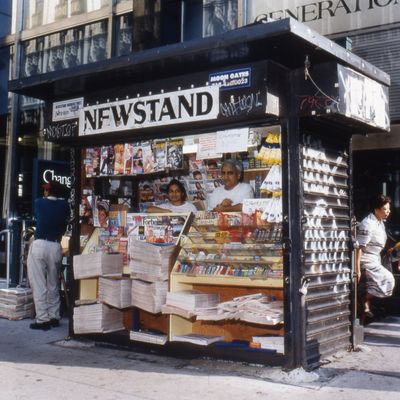
Newstand #10 Photo: Moyra Davey/Courtesy of Murray GuyNew York
Newsstands are the kind of New York City landmark you never notice. They are around, but like benches and bike stands, you acknowledge them, or their absence, only when seeking one out. Which, at least where newsstands are concerned, probably doesn’t happen very often these days.
A little more than 300 newsstands still operate in the city today. Most are in Manhattan, plus a smattering in the Bronx, Brooklyn, and Queens, says Robert Bookman, counsel to the New York City Newsstand Operators Association. At their peak, in 1950, there were 1,325 newsstands. Then, newsstands served as a safety net for vulnerable populations, with the city setting aside small but valuable slices of sidewalk for the blind and disabled veterans (and later all vets) returning from World War II and the Korean War. But by the 1960s newsstands would begin their decades-long decline. In 1979 about 400 newsstands remained, and their numbers hit a historic low — a little more than 280 — in the late 1990s. What remain today are the survivors.
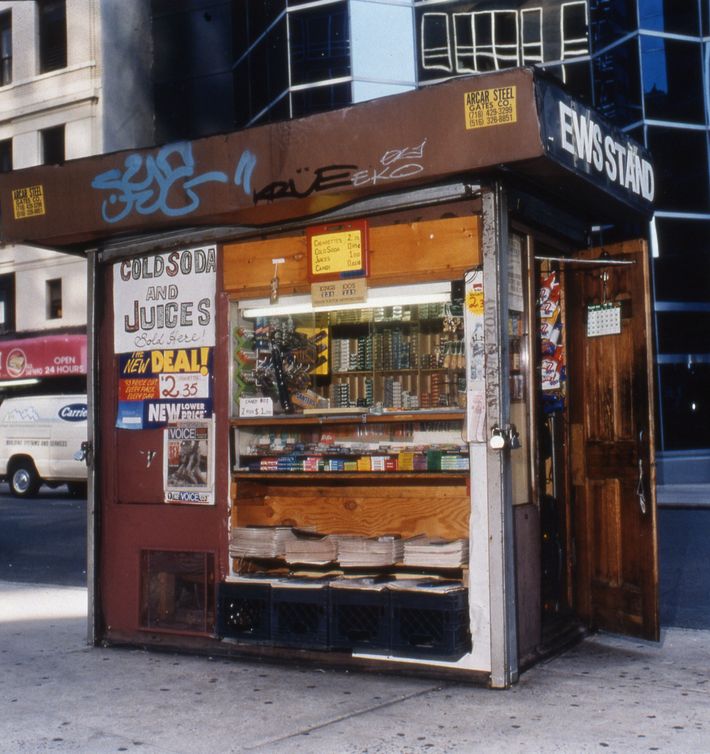
Newstand #12 Photo: Moyra Davey/Courtesy of Murray GuyNew York
The numbers prove the newsstand’s narrative is knottier, and a bit less romantic, than simply the decline of print — though that plays a huge part. Newsstands sold “1,000 newspapers and now they’re selling 200,” Bookman says. “That’s 800 customers not coming to the newsstand.” The people who passed by and picked up the Times or the Post also grabbed a pack of cigarettes, or gum; now they’re doing neither. A tough regulatory environment, which, Bookman says is the primary deterrent to newcomers, and heavy cigarette taxes have also squeezed the industry.
When Moyra Davey decided to photograph newsstands in 1994, she also saw them as vanishing pieces of an old New York. She was inspired by French photographer Eugène Atget, who recorded Old World Paris, including a handful of newsstands. Though Davey didn’t normally do street photography, she wanted to create her own New York series, in color. “I connected to this idea that they were somehow analogues to dark rooms and both on their way out,” she says. “Both the darkroom and the newsstand were on some level digitized.”
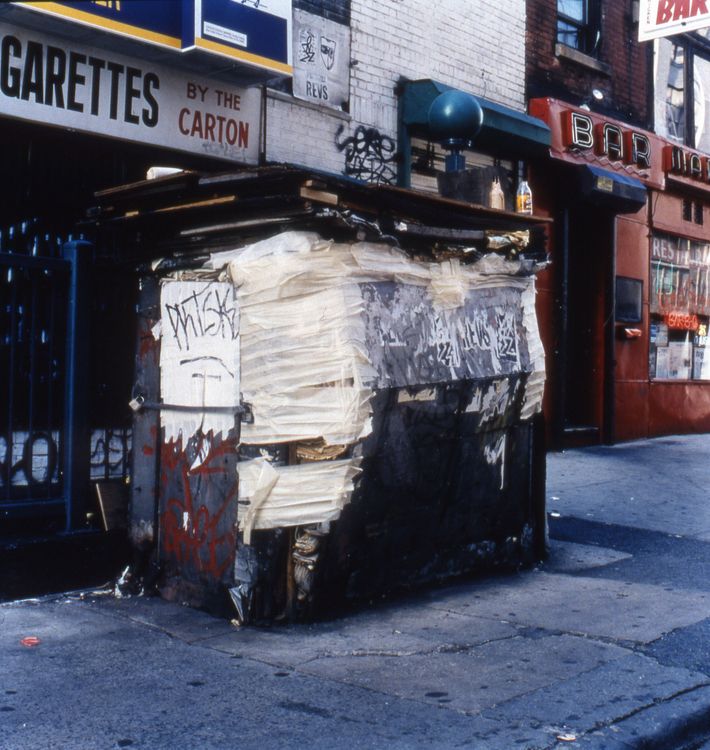
Newstand #1 Photo: Moyra Davey/Courtesy of Murray GuyNew York
Davey spent more than a year photographing newsstands in Manhattan. “They’re hard to photograph,” she admitted. The city – trucks, pedestrians, bad lighting – got in the way. Many of the newsstand operators were reticent about getting their pictures taken. “Some of the guys had to be convinced,” Davey says. “They were a bit guarded. Some were very friendly, but in general, who wouldn’t be guarded if somebody comes up and wants to take your picture?” Davey got a lot of “no’s,” but she persisted. Some eventually relented. She offered each a print of their newsstand.
Davey didn’t record the addresses or intersections of her projects — she just labeled them, in order, an anonymous inventory of a business’s last stand. Her series is also a throwback to a grittier, darker city. The newsstand vendors work out of dilapidated, graffitied steel frames. The magazine and tabloid covers are about people and problems and scandals that barely register now. Cigarettes cost $2.50 — or less. Davey doesn’t believe she intended to, but she recorded a New York City moment, now disappeared.
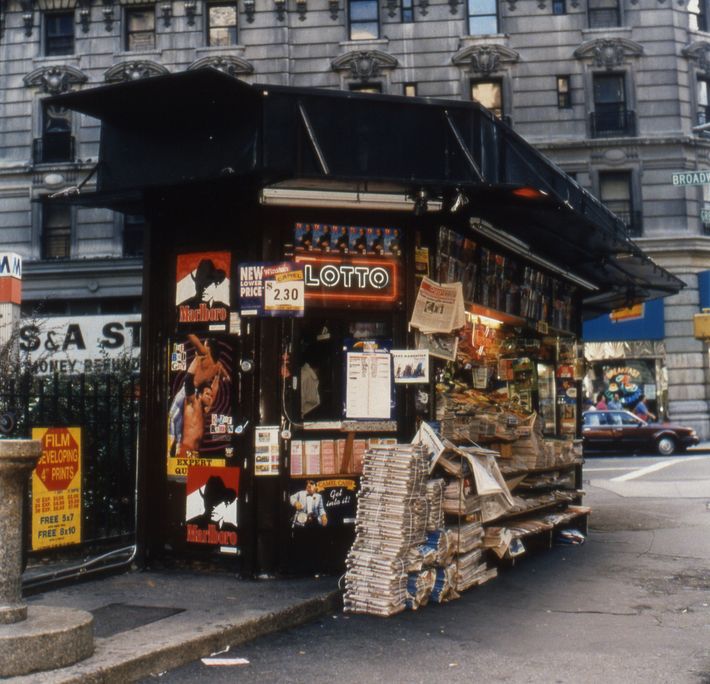
Newstand #17 Photo: Moyra Davey/Courtesy of Murray GuyNew York
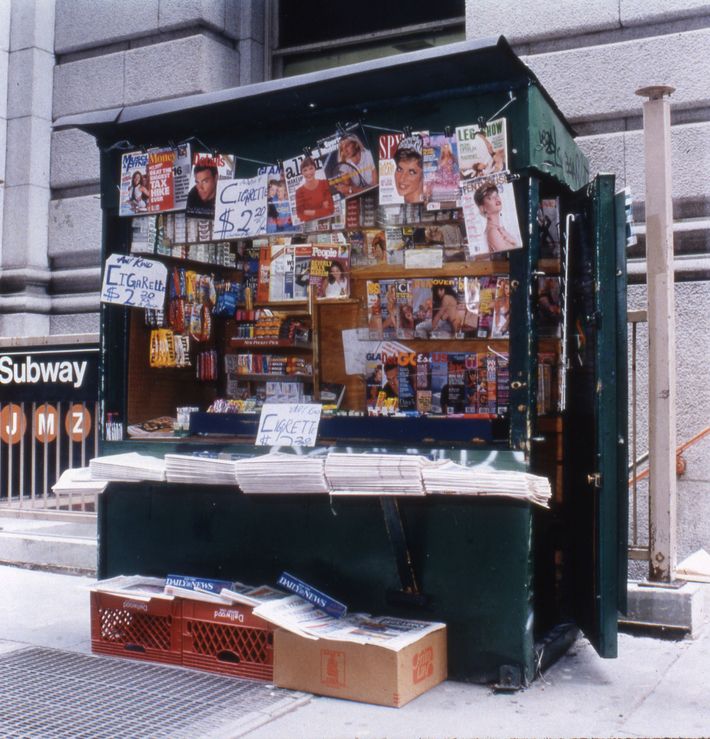
Newstand #9 Photo: Moyra Davey/Courtesy of Murray GuyNew York
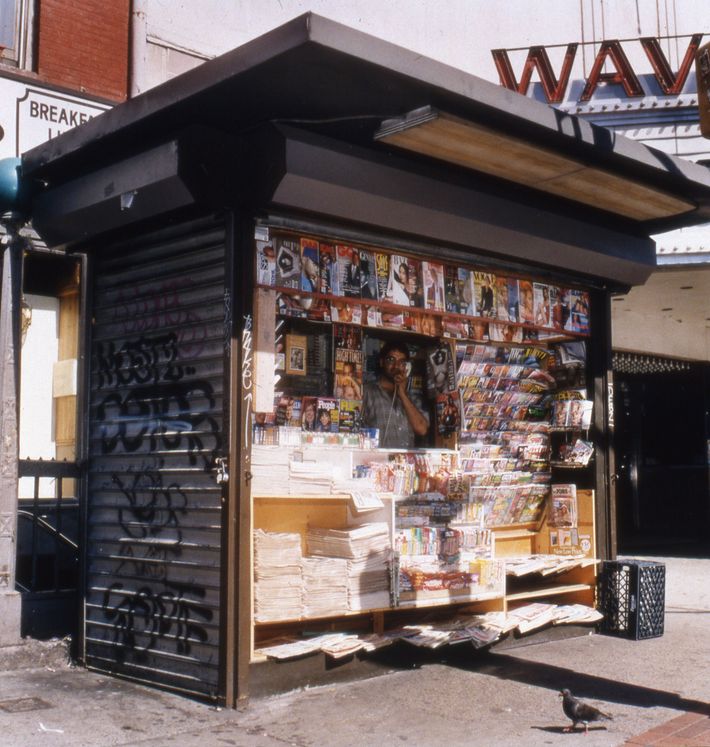
Newstand #13 Photo: Moyra Davey/Courtesy of Murray GuyNew York
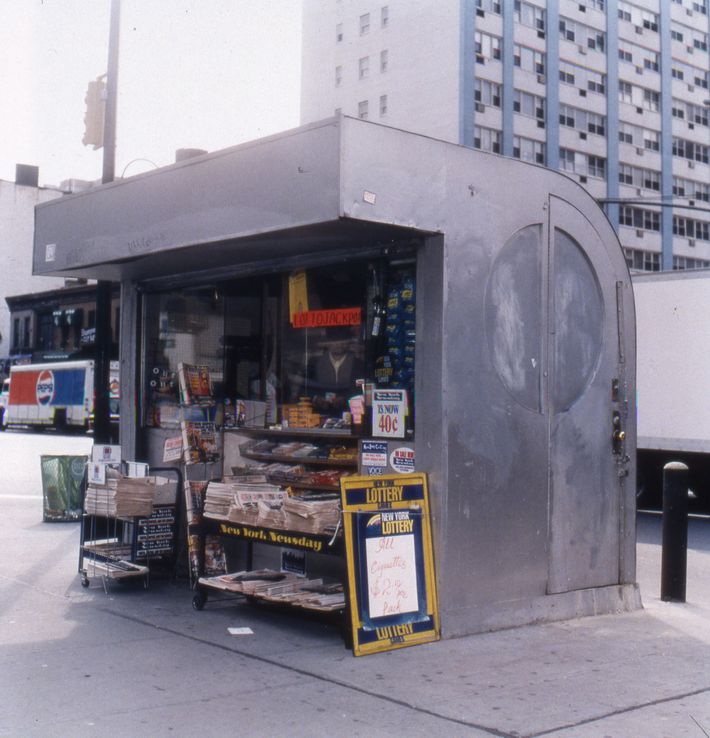
Newstand #22 Photo: Moyra Davey/Courtesy of Murray GuyNew York
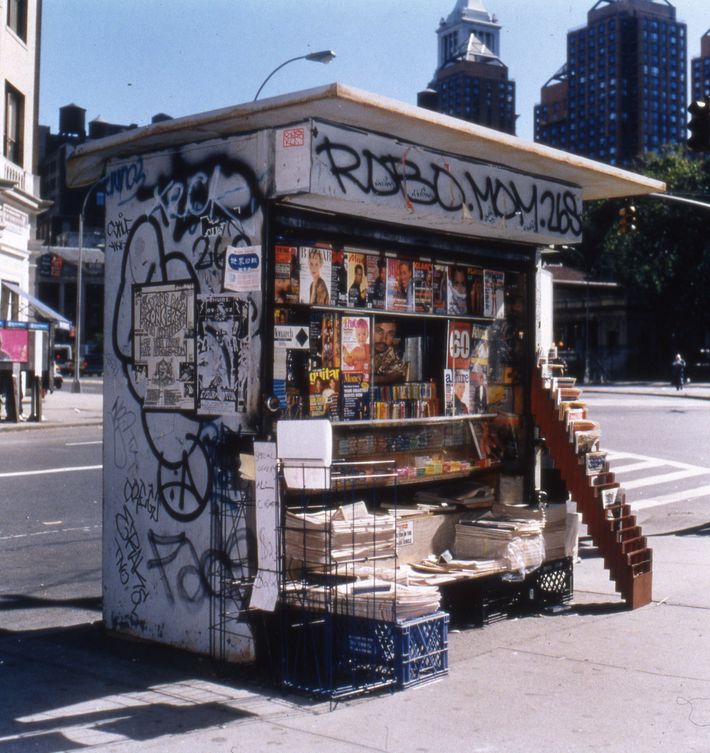
Newstand #19 Photo: Moyra Davey/Courtesy of Murray GuyNew York
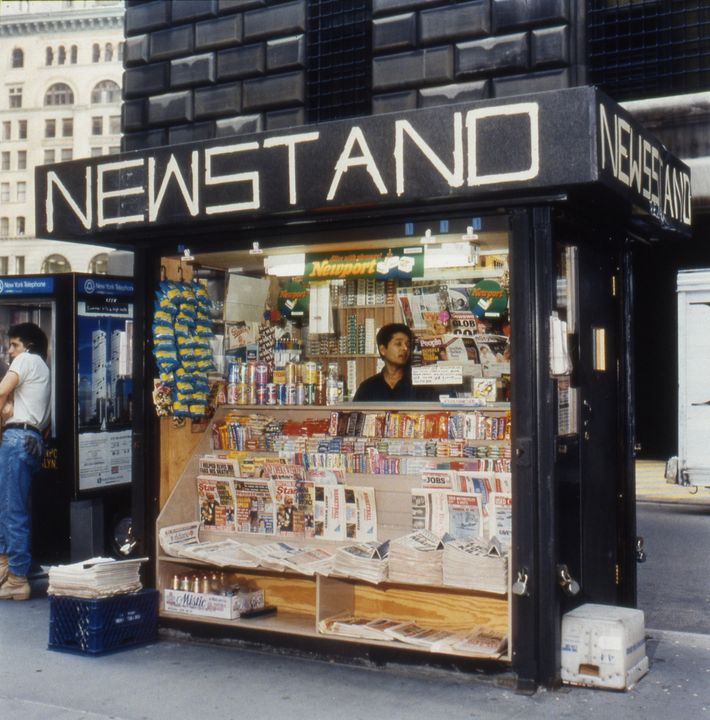
Newstand #11 Photo: Moyra Davey/Courtesy of Murray GuyNew York
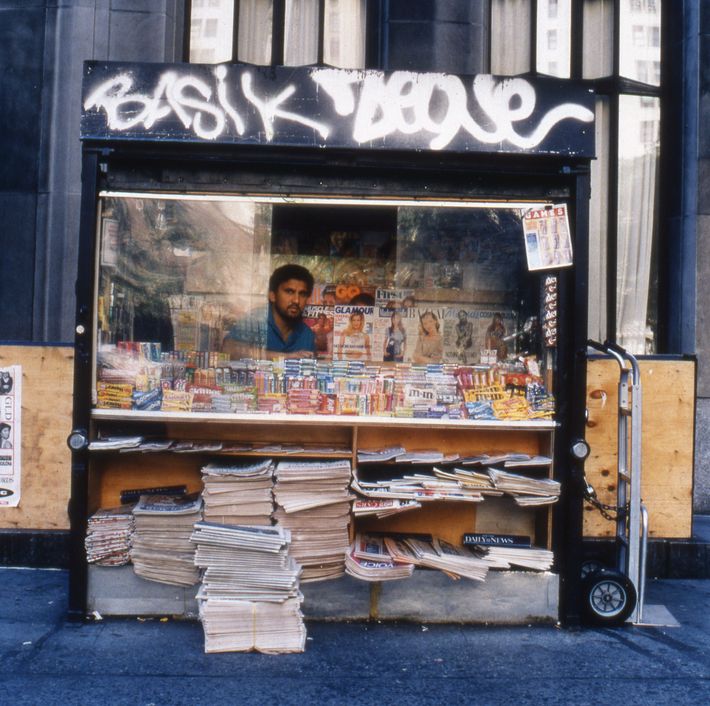
Newstand #5 Photo: Moyra Davey/Courtesy of Murray GuyNew York





